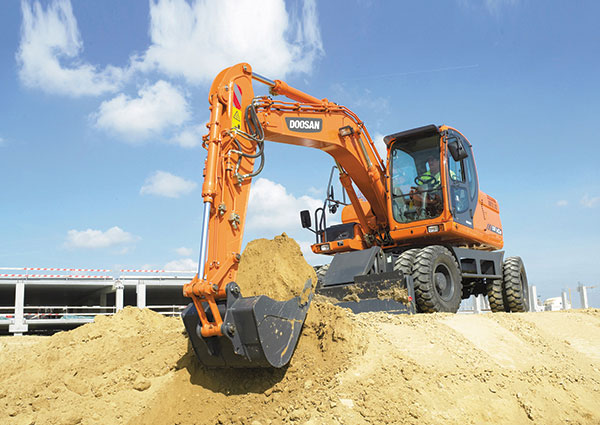With the summer construction season winding down, now is an ideal time to consider adding a crawler excavator to your fleet. Selecting an excavator model, however, is just the first step. It is important to calculate the total cost of ownership on your asset.
Many owners may think they have a handle on cost of ownership, only to find that incomplete calculations have caused their profits to fall shorter than expected. A proper cost-of-ownership model will include a spectrum of items designed to help you invest more wisely.
Establish a Fiscal Foundation

One of the most important variables that will influence your cost of ownership is the purchasing method. The method you choose should match the time frame you expect to operate your excavator. Today’s economic climate has caused many business owners to elect a finance tool that establishes a monthly, quarterly or annual payment with optional ownership at the conclusion. Unless an owner pays off the contract early, the payment is a controllable cost that is fixed and budgeted. Typically, owners can choose from the following four basic purchase options:
- Cash – This is a viable option for those who seek instant ownership and have the resources.
- Loan – This option appeals to small- to mid-sized construction companies that need to preserve capital and seek low to zero-percent interest rates. Advantages include seasonal flexibility to structure heavier payments during higher cash-flow months. However, taking out loans can result in the highest monthly cost.
- Rent-to-purchase – A short-term rental affords three benefits that generate revenue and build equity. First, it creates a time frame to assess an excavator’s performance before purchasing. Second, owners who have credit issues can continue building equity in a machine before adding it to a fleet. Third, since owners pay only while using the equipment, rental is a great choice for unexpected projects.
- Lease-to-purchase – Structured over a longer period than rental, this option provides the lowest payment in all cases. It also offers owners an end-of-term buyout opportunity and can include bundled maintenance or warranty. It also offers seasonal payment-term flexibility.
According to the U.S. Small Business Administration, 85 percent of all companies lease equipment. Most of those enterprises indicate that leasing is their average to best means for financing equipment purchases. With the 2013 extension of IRS Section 179, which allows businesses to deduct the full purchase price of financed or leased equipment put into service between January 1 and December 31 of 2013, this tax credit can have an even more positive impact on leasing.
Capture Operating Costs
Once a purchasing method has been determined, a range of operational costs needs to be analyzed. These costs start with an appropriate level of insurance coverage and operator training. Through proper use of an excavator, operators can reduce wear and tear and trim fuel consumption.
To project fuel costs, multiply the excavator’s consumption rate in gallons per hour by the cost per gallon. Multiply that per-hour cost by the total number of hours you plan to operate the machine. This will provide an estimate of consumption, but it’s important to recognize that consumption rates can vary significantly among job types.
The next operational variable to evaluate is the potential wear and replacement of the working group, such as bushings, pins and wear plates on your excavator. It is also important to consider the ground-engaging tools, like bucket teeth and cutting edges. Likewise, if an excavator is a dedicated specialty attachment machine, the contractor should work with the dealer or attachment manufacturer to calculate tooling replacement cost. Undercarriage wear and track replacements also need to be accounted for in the cost-of-ownership analysis.
Reduce Maintenance Miscues
Owners should select three- to five-year maintenance contracts. These programs control costs and increase uptime if the company doesn’t employ a dedicated technician.
Technological advances also help owners control costs. Global positioning systems are becoming standard on excavators. These systems alert operators to required maintenance and can link dealerships to machines in the field to monitor diagnostics and service alerts.
Service on major components may need to be incorporated into the cost-of-ownership equation if an owner plans to exceed more than 10,000 operating hours on a machine. At this usage level, factors may need to be included such as rebuilding or resealing pumps, swing and travel motors, cylinders and engines.
Finally, with a machine’s projected life cycle that comprises the initial cost of the machine minus the residual value and that accounts for all hard costs, an owner can apply a simple formula to capture a total cost of ownership. A basic calculation divides the total expense figure by the number of years you plan to operate the machine. It can be further divided by the estimated number of working hours to establish an hourly rate.
